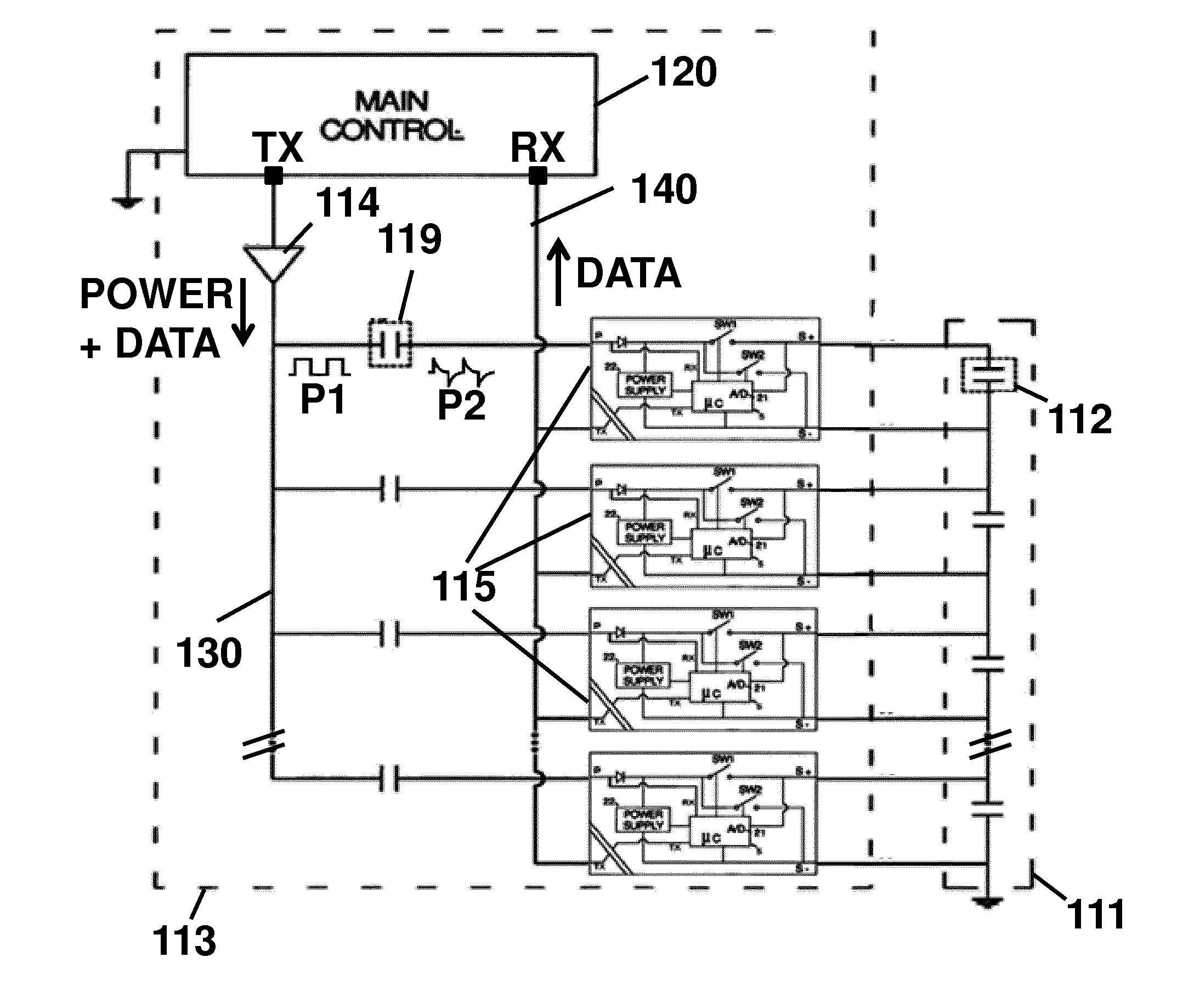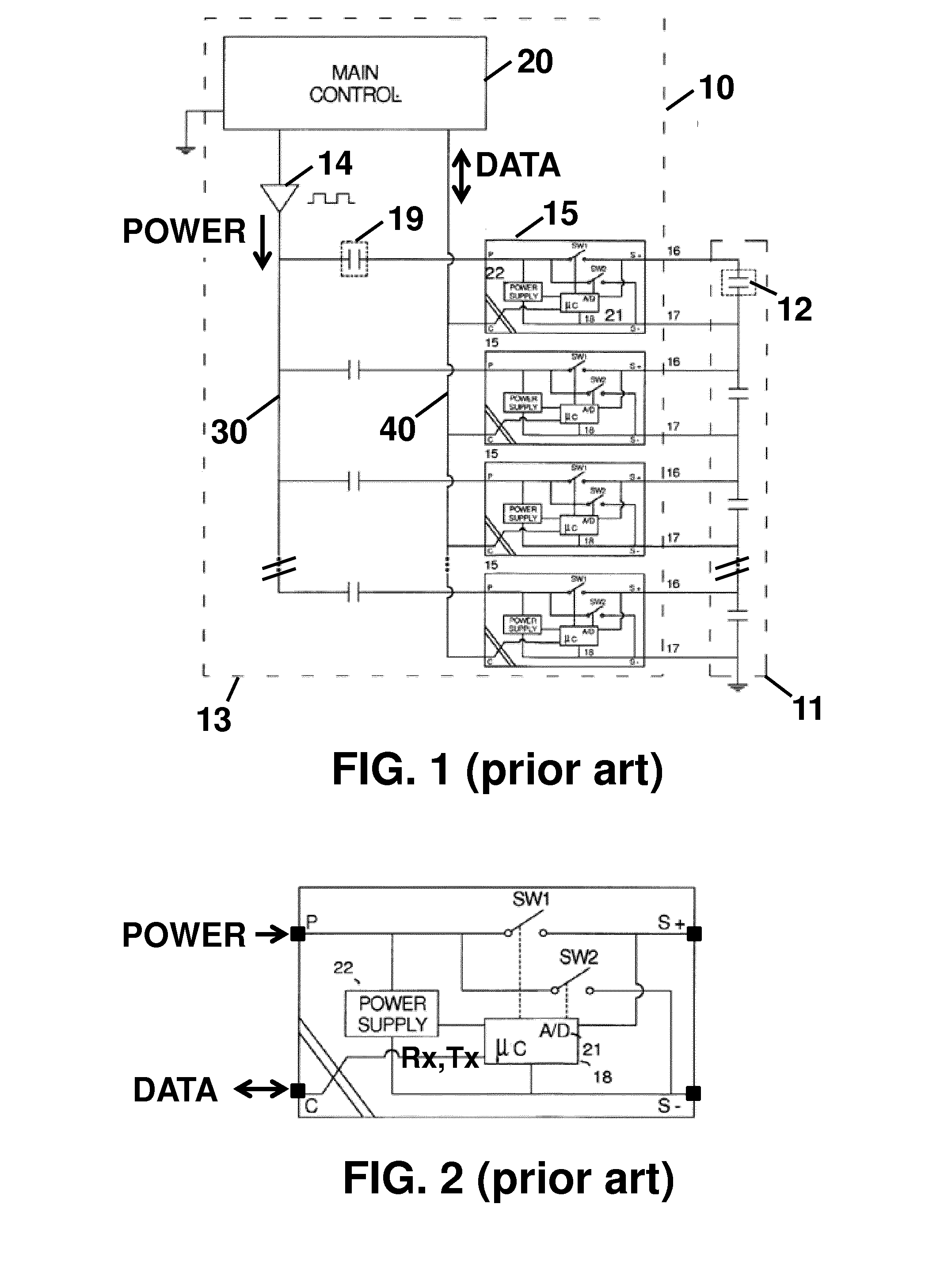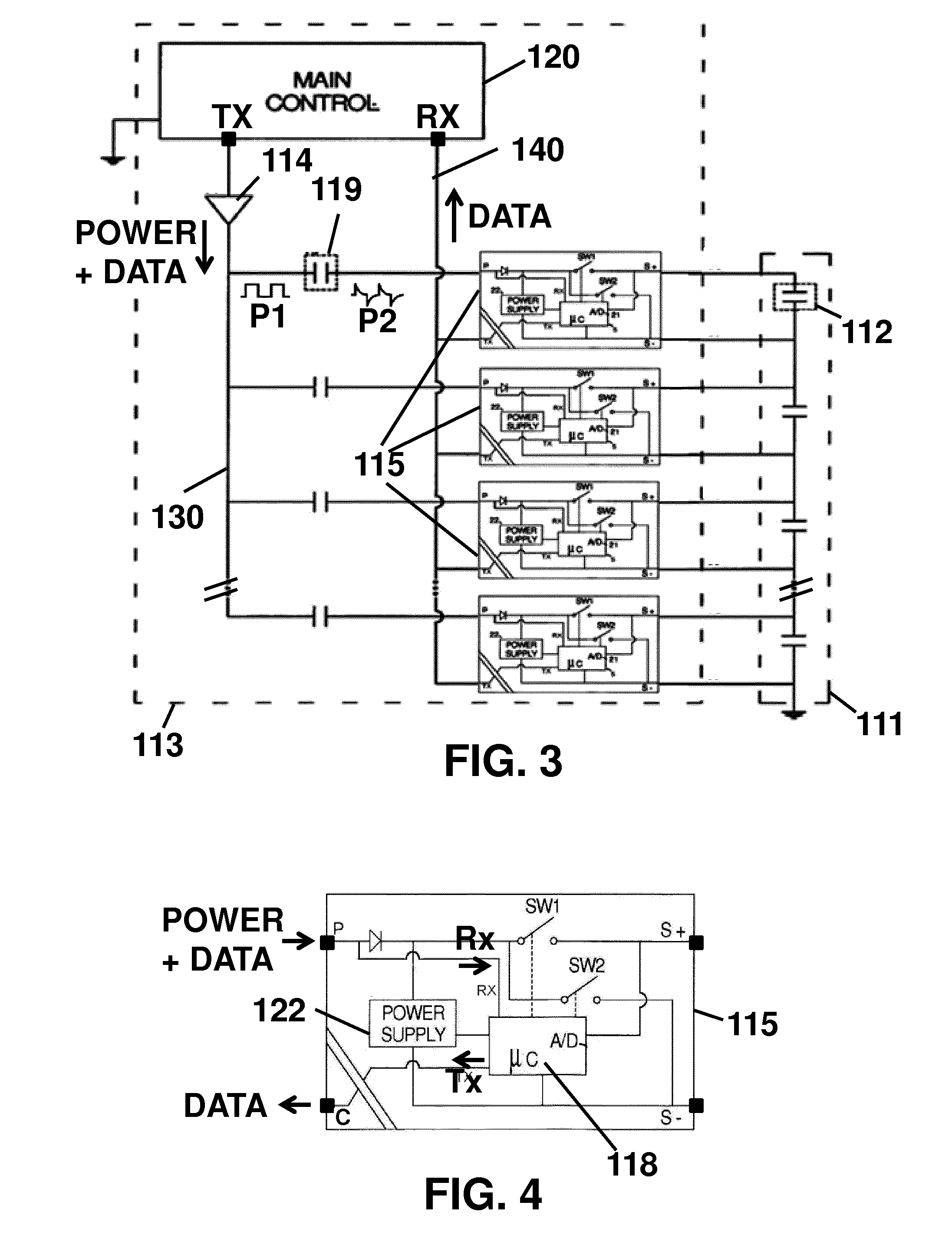Method and system for providing pulsed power and data on a bus
a bus and pulsed power technology, applied in the field of methods and systems for providing pulsed power and data on the bus, can solve the problems of system bulky and expensive, prohibitively expensive for some applications, and requires extra board space, so as to avoid collision of messages on the back channel and improve data ra
- Summary
- Abstract
- Description
- Claims
- Application Information
AI Technical Summary
Benefits of technology
Problems solved by technology
Method used
Image
Examples
first embodiment
[0097]FIG. 3 to FIG. 7 will be used to explain the main principles of an embodiment of the present invention.
[0098]FIG. 3 shows a system 113 according to aspects of the present invention. The system 113 is a variant of the energy storage system 13 of FIG. 1, but this is not intended to limit the invention to energy storage systems. When comparing the block-diagram of FIG. 3 with that of FIG. 1, it becomes immediately clear that the main difference between both systems 113, 13 is that the data from the main control unit 120 to the one or more slave units 115 occurs over the first bus 130 instead of over the second bus 140, as indicated by the arrows “power and data” and “data”. While not directly evident from FIG. 3, this offers the important advantage that the second bus 140 can now be uni-directional instead of bi-directional. When using opto-couplers, this means that one of the two opto-couplers (one for each direction) can be omitted per slave 115. This is a major advantage in te...
second embodiment
[0126]Having explained the main principles of the present invention by means of the first embodiment described in relation to FIG. 3 to FIG. 7I, further embodiments of the present invention will be easily understood. In the following all the disclosure relating to the First Embodiment above is included here by reference in this embodiment. In particular all pulse wave forms, modulation and demodulation techniques described with reference to FIG. 7a to FIG. 7h are included by reference in this embodiment.
[0127]FIG. 8 shows a second embodiment of a system 213 according to aspects of the present invention, whereby the main control unit 220 is adapted for sending combined power and data pulses over a bus 230 to one or more slaves 215, which slaves 215 are connected to the bus 230 by means of series capacitors 219 (or capacitive circuits, or capacitive devices). The slaves 215 can receive the data in any of the ways or in the same way as described above (first embodiment), e.g. by measur...
third embodiment
[0130]FIG. 10 shows a third embodiment of a system 313 according to aspects of the present invention, whereby the main control unit 320 is adapted for sending power and data signals over a bus 330 to one or more slave units 315, which slave units 315 are connected to the bus 330 by means of series capacitors 319 (or capacitive circuit, or capacitive device). The slave units 315 can receive the data from the main control unit 320 in any of the ways or in the same way as described above (first embodiment), by measuring the time differences Δt between rising edges of the second pulses P2. In the following all the disclosure relating to the First and Second Embodiments above is included here by reference in this embodiment. In particular all pulse wave forms, modulation and demodulation techniques described with reference to FIG. 7a to FIG. 7h are included by reference in this embodiment.
[0131]The main difference between the third embodiment and the first embodiment is that the slave un...
PUM
 Login to View More
Login to View More Abstract
Description
Claims
Application Information
 Login to View More
Login to View More - R&D
- Intellectual Property
- Life Sciences
- Materials
- Tech Scout
- Unparalleled Data Quality
- Higher Quality Content
- 60% Fewer Hallucinations
Browse by: Latest US Patents, China's latest patents, Technical Efficacy Thesaurus, Application Domain, Technology Topic, Popular Technical Reports.
© 2025 PatSnap. All rights reserved.Legal|Privacy policy|Modern Slavery Act Transparency Statement|Sitemap|About US| Contact US: help@patsnap.com



